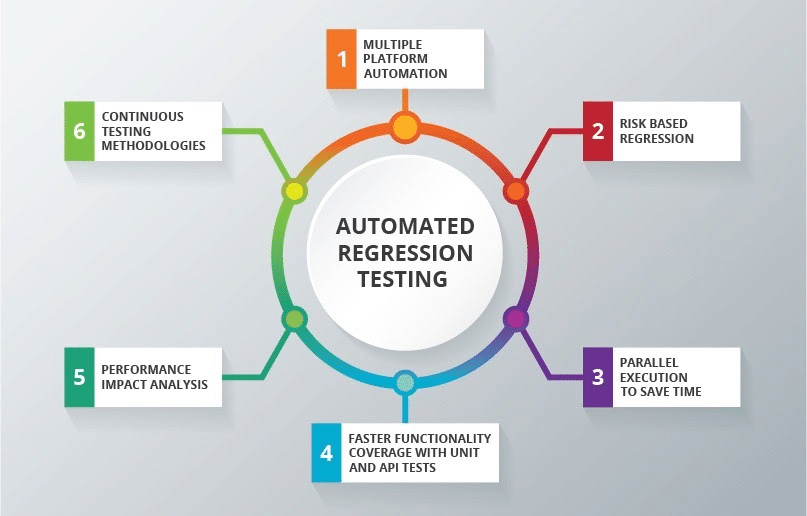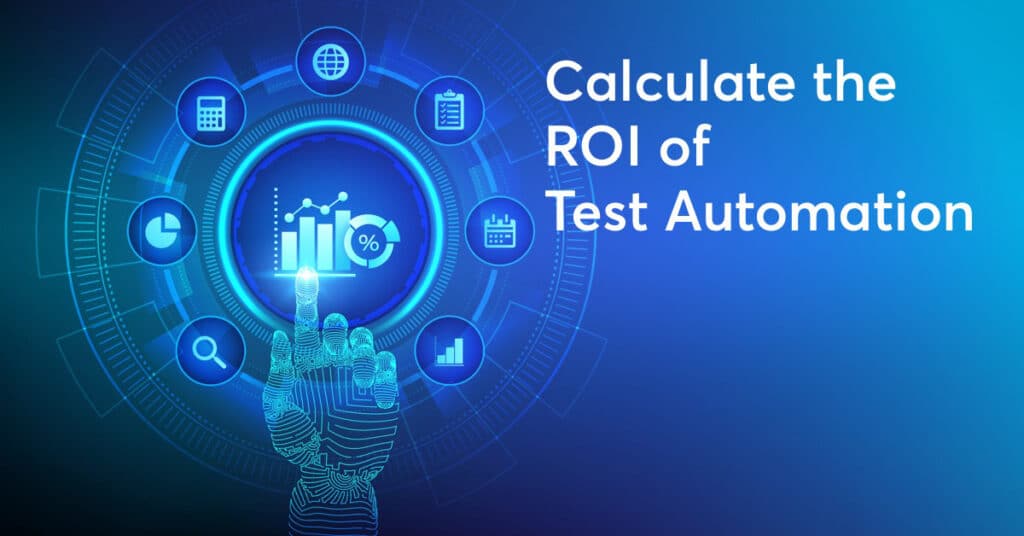Test Automation ROI
Table of Contents
Manual testing is a big task. Several pitfalls might trip up your implementation. The teamwork must deliver a good return on investment ROI and the truth is that it is quite tough to measure Test Automation ROI. Measuring ROI is even more difficult.
Calculating ROI on Test Automation:
Software developers’ teams make a common mistake while performing automation test ROI. They recognize testing as a crucial factor in the software’s total cost of ownership. When you see QA as a cost center, then ROI is necessarily going to be limited to cutting costs. Here is some vital information that you can use to provide better ROI measurement.
The Basic Measurement
The best way to calculate ROI on test automation is to measure how much QA time it saves. If it costs about 500 hours to write various automated tests, but those 500 tests reduce the quantity by performing a manual test every week by 20 hours, then it is a simple calculation. I assume developers are twice as expensive as QA engineers then it will save money in a year. Calculating like this is very easy to understand, and they do not provide great insight into the company’s proper coat. For that, you can layer the monthly cost of the software which you are using to automate. That will create a better calculation.
Tests Need to Be Maintained
You cannot write tests once and leave them forever. Trials are like software like another bit of code which means that ROU for testing needs to take into account how those tests will change over time. It’s not about new trials. Many features change the course of work. This also means that the developers spend more time modifying existing tests to suit new code which has been written. It would be best if you accounted for it while calculating the ROI.
Measuring is quite challenging. For the best calculation, of the ROI for test automation, you will need to work with the devs to know and understand as best as you can how much time they are spending on writing and maintaining the tests. These are critical calculations.
How to Measure the ROI of Automated Testing?
The growth of the latest technologies and demand for speed release cycles are driving the standard for quality software through the roof. Many trends such as automation, continuous testing, and DevOps have increased the bar by establishing the speed and flexibility in the software development cycle.

To be in the competition stage, teams today are pushed to optimize the testing and development processes to get more done in a concise amount of time. The cost is also kept low.
This ensures a perfect trifecta of speed and quality. Speed and cost are both the goal every team aspires to accomplish and the top challenge they face. Quality assurance teams have found that they had to make tradeoffs between the three. It also ensures delivery faster but the risk of bugs reaching the production. It also makes sure the quality and gambles with keeping your release date. By implementing these latest trends, especially the automation part, then you will not have to choose.
To meet all the rising demands for faster delivery with bug-free releases, then it is essential to assess whether the return on investment is worth the change or not. Before building out an automation strategy, you will need to calculate the net gain, and you will see from transitioning.
Test Automation ROI Formula:
Before going on the benefits of transitioning and the investments in tools and resources, you will need to dive into the common pitfalls in the calculation of the Test Automation ROI.
Common ROI Pitfalls
Manual tests are always crucial for creating, developing, and maintaining automated tests. The automation has scenarios that will require manually executed test cases which means you will have to develop, run and maintain those tests.
Redundant and repetitive test processes are great candidates for automation as it has to run multiple of the same test type, which can be tedious and prone to human error.

- Test which requires human observation like to determine whether a website is aesthetically pleasing or validating which the navigation menu is very friendly. You will find that it’s not actually easy to automate and also will not offer a high ROI if you perform.
- To implement a strategy, you will need automation knowledge and product knowledge as well which means your team should have a better understanding of the application you are testing and which automation tools you have planned to use.
- After that, you will need to maintain and update the test sheets.
- After building new features and improvements, your test and regression suites will grow. To ensure the usable period over months or gears, you will need continuous maintenance.
- While creating a business case to transition to automation, you will want to gauge the short-term benefits of investment, and this will also impact the whole team and organization for a long time.
- Not taking these pitfalls into your account while calculating the ROI will skew your measurement. It is essential to take these pitfalls for your success.
- Transitioning to automation is a complete investment and to gauge the result effectively, you will need a roadmap with accurate benchmarks.
How to measure the ROI of Automated Testing?
There are six ways to measure the ROI of Automated testing. Let’s start by breaking down the ROI equation into two parts and beat review.
The first step includes the calculation of costs and cost-saving to determine the ROI. Here are the metrics which you will need for each and best practices to keep in mind.
Automation of New Tests
When you start to create an automation business case, the first method is to figure out what it will take to automate new test cases. To run through the total cost, you will need to take the hourly fee.
Calculation 1:
To measure the cost of Automating New tests-
The key point to walking on this step is to realize that some test cases should be manually executed. While deciding which one should automate first, it is an excellent step to start with the more straightforward and repetitive test steps. It is relatively easy to fall into the trap of automating complicated and time-consuming test cases first. This takes a long time to implement to fewer returns and transitioning the smaller tests out of the gate also enables us to start automating quickly. It would be best if you considered how much time a team is spending on creating and executing as well.
Automation of Prior Tests
The second step includes the calculation of the cost of automating your initial test by the meaning of your regression tests.
Regression testing is the procedure of running older tests to make sure the new update to a piece of software has not been introduced or re-introduced previously eradicated bugs. This test is crucial for success as it helps you to make sure that the bugs stay dead and the product features which are validated continue to perform correctly. This test suite will grow and will take longer to execute. Implementing automation allows for running regression tests quickly and increasing the confidence in the next release.
Calculation 2:
The cost of automating Regression Tests
When you calculate the ROI, you must assume each new test that will eventually become a regression test. Take the beginning to make sure the process and automate repetitive test cases with medium to high complexity. You will get the most value for your efforts.

The test will require maintenance, and this will give an accurate year-over-year view of ROI.
Coverage Across Environments
The main motive of automated testing is to improve the quality of software while testing faster and reducing costs. The explosion of devices and operating systems has expanded widely. While calculating the values of the environment coverage, you will need to consider whether you are running tests in parallel or not. Without proper parallel testing, it can offer you the risk of encountering the defects further downstream. The sooner you can catch the defects the cost to fix them will be cheaper.
Calculation 3:
Test coverage calculation
To ensure proper test coverage, you need to increase environment coverage by running cross-browser tests, unit tests, and regression tests in parallel.
Reduction of Defect Leakage
Defect leakage defines the number of bugs or problems which are a result of the production not being found earlier in the software development cycle. This can lead to the outcome of enormous testing coverage. The critical step that you want to track is the costs that are associated with having address defect leakage post-deployment.
Calculation 4:
Defect leakage calculation
Testers perform by validating an update to a piece of software at the time of creation. The end motive of calculation is to reduce the costs by catching bugs sooner. This can even save you a valuable amount of time and cash as well.
Test Redundancy and Reusability
The purpose of tracking the reusability is to avoid any duplicate testing efforts. This allows you to improve the testing cycles and improve test speed as well. To perform this test, you need to know the number of tests that were recorded more than once and the amount of time spent on redundant test cases.
Calculation 5:
The calculation of defect leakage
You need to take a step back to look into your entire testing framework to determine which tests are being run the most. To proceed effectively logging in the trial, there are a high number of variations. Leverage test helps you to search for duplicate test scripts. Tools such as QAComplete enable you to store teats with custom fields so that you can personalize them to the organization.
Reduction of Knowledge Leakage
This is the most forgotten measurement while calculating automation ROI. The average tenure is typically three to five years. While creating a long-term ROI case for moving to automation, it is crucial to take this into your account.
Calculation 6:
The cost saving
The best step to prevent losing as much knowledge as possible is to document the test process. Having good test documentation will allow the next engineer to recast the lost case rapidly. This also provides you to reassess.
QA People Are not frequently the Best Test Writers
There is some common mistake that is visible in companies transitioning to test automation. Mostly they think that this is because they have QA specialists and those who can translate test plans to code. Many QA experts are not always equipped to perform and are not interested in learning. Some of the QA experts are more interested in learning how to code. Mentoring the people and helping them to fill the gap by automating testing is the best way. If you have people like this, then the mentoring time is another cost your account will need.
If you don’t have, then you need to hire them as soon as possible because relying on more automation requires more people who are well-versed in maximizing the software test coverage and testing software from several directions. The best way to ensure successful testing automation make sure that your ROI calculations are factoring in the cost of finding more people to write useful tests possible.
QA People Also Make Mistakes
QA experts also make mistakes as things slip through the cracks. They test the same software every day and in the same process for a week or even for months. What types of monotonously add up and make something miss. After all, they are also human.
Conclusion
Test automation works at a scale that humans can’t. The tools mostly stood up to the stress as the teams tested them at scale. Savings into the FOI calculation leads to a way that QA offers value to the company. Test automation provides visibility into the needs of your company’s growth and success, and it also helps to anticipate the demand spike, which would mean for your software. Contact Amplework Software Pvt Ltd and find out how you can increase your team’s testing return on investment today.
Related Blog:- Best Time for Conducting Automation Testing?




 sales@amplework.com
sales@amplework.com
 (+91) 9636-962-228
(+91) 9636-962-228





